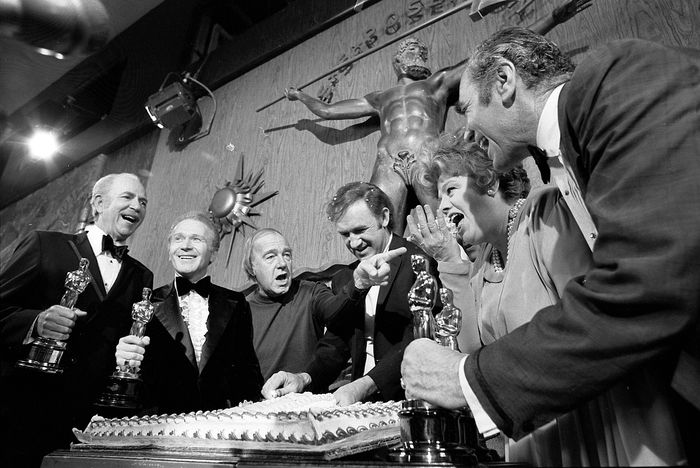The climate crisis in spring: how I stopped watching disaster films and learned to love the planet
Ruby Randall explains the importance of positive climate impact in film

When we think of current environmentalist films, the disaster and dystopia genres are the two that most frequently come to mind. The Day After Tomorrow (2004), Don’t Look Up (2021), Snowpiercer (2013), the Mad Max series, and Soylent Green (1973) may be familiar titles. There are many problems with these films: the white, western-centric focus, the scripts’ melodramatic pseudoscientific babble, and most importantly, their irrelevance to the climate issue we face.
“The prospect of disaster doesn’t hit quite as hard when you’re in the midst of one in real time”
Using metaphors like a giant meteor coming to destroy the earth, or a setting 70 years in the future, might be useful for gilding the climate pill, but in focusing on distilling the issue to a digestible film format, the subject matter is too removed from reality to have any substantial effect.
Of course, the prospect of an Apocalypse is one that has been scaring people into straightening up and flying right since “Hey Grug, maybe you should think twice about hitting Zarg with that rock.” Yet the issue here is that an environmental apocalypse is only one of many depicted in cinema, as the volcano, flood, pandemic, alien invasion, Judgement Day, and nuclear war movie will tell you. The prospect of disaster doesn’t hit quite as hard when you’re in the midst of one in real time.
Fear is nonspecific, and doesn’t endure in the frightening object’s absence. Living in a country not experiencing droughts, forest fires, or mass starvation, we’re in the privileged position to keep out of sight out of mind. Truly, the hard hitting facts as shown by documentaries like David Attenborough: A Life on Our Planet (2020), are effective tools of education, and certainly inspire political climate action in those willing to ask the powers that be why the hell they’re taking it so lightly. But at the same time, climate action isn’t just about politics – it is also an individual relationship with the world around you.
Not to get all flower power on you, but maybe sometimes the answer is love rather than fear, dude. Climate terror, especially right now, can feel so overwhelming that we bury it rather than act upon it. Can’t it be channelled differently? Individual and communal efforts to create a positive impact are hardly ever shown in film, despite being just as important as widespread rebellion and protest. Positive climate impact itself is hardly ever shown; The Boy Who Harnessed The Wind (2019) and 2040 (2019) are two great examples of this – the former showing the hopeful process of a boy making a lasting impact on his suffering community, and the former taking an ‘average-joe’s’ view on how to prevent disaster – but these are few and far between.
“Not to get all flower power on you, but maybe sometimes the answer is love rather than fear, dude”
Strangely enough, this rule excludes the world of children’s film. Think of all the positive, nature-centric films about the planet you saw when you were little. The Lorax (2012), Barbie: Thumbelina (2009), Wall-E (2008), Bee Movie (2007), are a few I can remember. These were all probably made by massive corporations that put a hollow environmental spin on their script for ‘educational’ purposes, and it’s easy to cite children’s films as positive, because they’re, well, children’s films. But they can be taken seriously. Almost every Studio Ghibli film that isn’t about planes and war takes an exemplary approach to environmentalist discussion.
The studio’s beautiful films like Princess Mononoke (1997), Nausicaä of the Valley of the Wind (1984), Pom Poko (1994), and even those more targeted towards kids like My Neighbour Totoro (1988) and Ponyo (2008), present the natural world as a magical place worth saving. Emphasis on the perspectives of creatures of the sea and forest rather than humans reframes the narrative. In seeing ourselves through nature’s eyes, the climate crisis is less a looming threat than a chance for us to nurture our fragile world. Even the human characters’ positive, often small-scale interactions with nature (planting trees and saving fish stuck in glass jars) have lasting impacts. Known for welcoming both adult and child audiences, I encourage anyone struggling to start living greener to look at Studio Ghibli.
Here are three small, positive things to do for the planet inspired by Studio Ghibli:
Totoro: Plant something. Ideally something pollinators like or that you can grow sustainable produce from, but any plant will do.
Ponyo: Find new ways to recycle your plastics. Lots of supermarkets have recycling points that prevent waste going to landfills.
Princess Mononoke: Donate to a wildlife fund. The National Trust has a scheme where you can adopt otters and hedgehogs.
Want to share your thoughts on this article? Send us a letter to letters@varsity.co.uk or by using this form
 Comment / Cambridge students are too opinionated 21 April 2025
Comment / Cambridge students are too opinionated 21 April 2025 Interviews / Meet the Chaplain who’s working to make Cambridge a university of sanctuary for refugees20 April 2025
Interviews / Meet the Chaplain who’s working to make Cambridge a university of sanctuary for refugees20 April 2025 News / News in brief: campaigning and drinking20 April 2025
News / News in brief: campaigning and drinking20 April 2025 Comment / Cambridge’s tourism risks commodifying students18 April 2025
Comment / Cambridge’s tourism risks commodifying students18 April 2025 Comment / Cambridge’s gossip culture is a double-edged sword7 April 2025
Comment / Cambridge’s gossip culture is a double-edged sword7 April 2025






